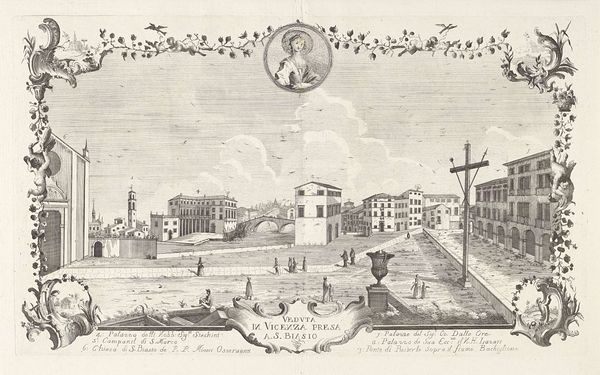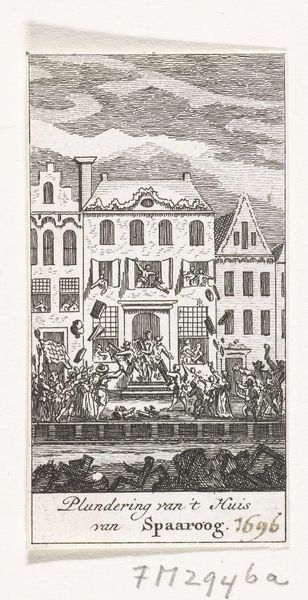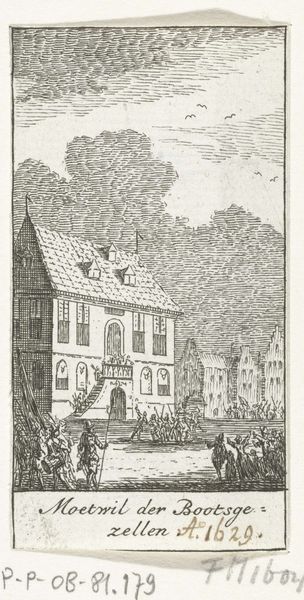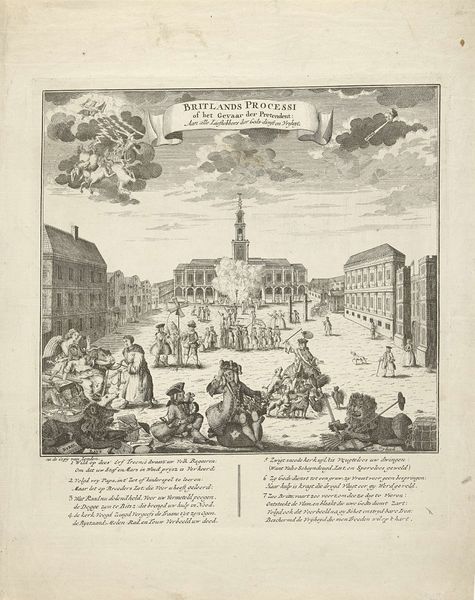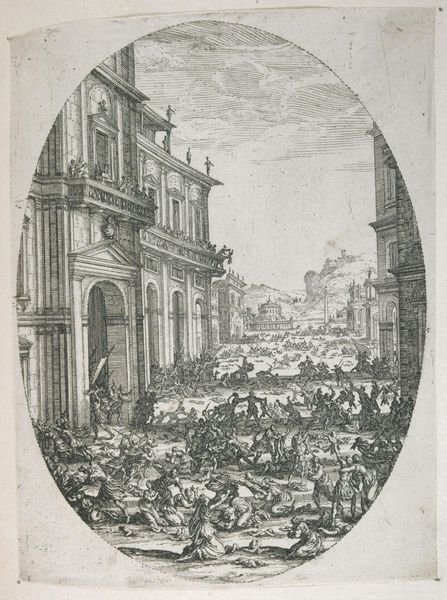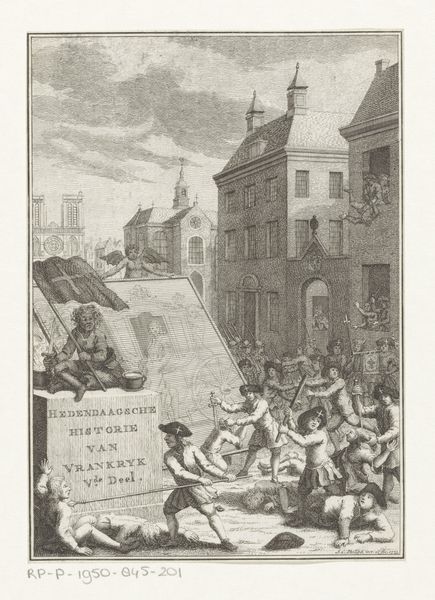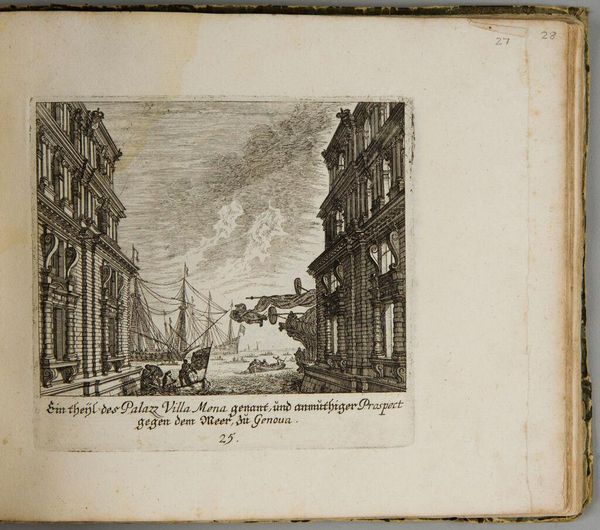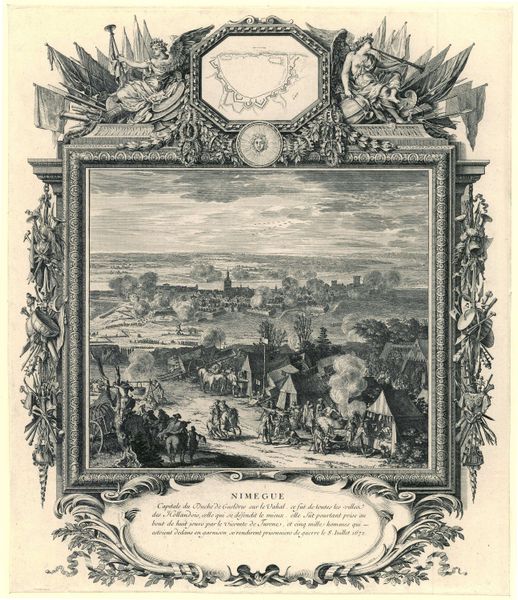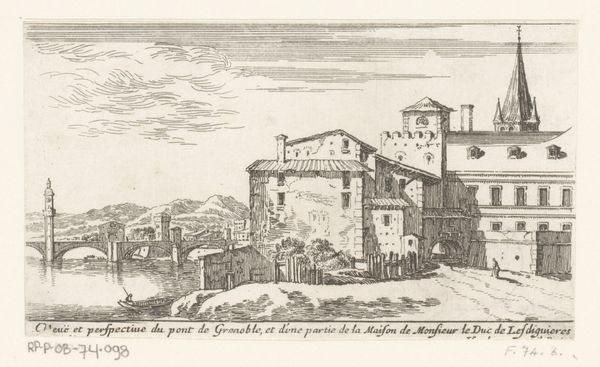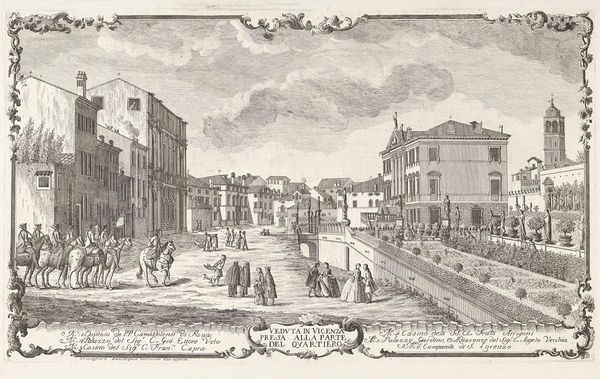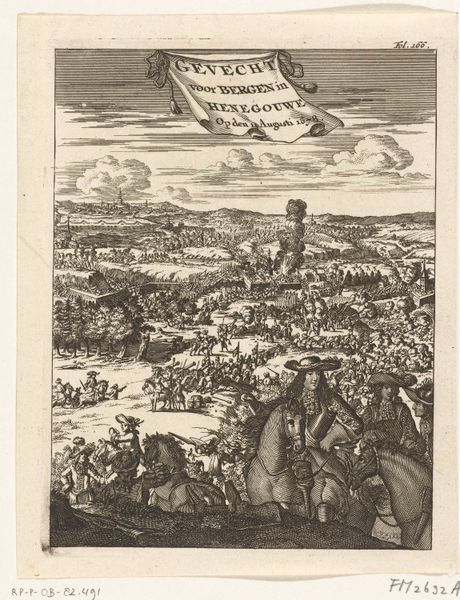
Kermisprent van de Amsterdamse askarrenmannen voor het jaar 1865 1865
0:00
0:00
graphic-art, print, etching, engraving
#
graphic-art
#
dutch-golden-age
# print
#
etching
#
old engraving style
#
cityscape
#
genre-painting
#
engraving
#
realism
Dimensions: height 342 mm, width 215 mm
Copyright: Rijks Museum: Open Domain
Curator: Here we have "Kermisprent van de Amsterdamse askarrenmannen voor het jaar 1865," which translates to "Fair Print of the Amsterdam Ash Cart Men for the Year 1865." It’s an etching, engraving, and print by Dirk Wijbrand Tollenaar currently housed in the Rijksmuseum. Editor: My first impression is that it feels like a captured moment—a bustling cityscape. The dense composition and the tonal range create an intimate, documentary feel, like a scene frozen in time. There's an immediate contrast between the architecture and the gathering of people below. Curator: That's insightful. The print depicts a festive gathering of the ash cart men of Amsterdam celebrating their annual fair. Notice the elevated stage structure, likely built specifically for this event. We see people congregated around it and on it. It speaks to community rituals and seasonal festivities central to civic identity. The ash cart men, an essential but often overlooked group, are being celebrated. Editor: And it is carefully orchestrated. The linear perspective guides our eyes through the crowd towards that vanishing point above, where there seems to be stagecraft happening. There's an interplay between the geometric rigor of the buildings and the organic forms of the figures and even the clouds in the sky. Even that tonal balance is beautiful; dark at the base of the artwork, which gradually gives way to a faded lightness towards the upper part. Curator: The symbolism here isn't overt, but think about ash. It represents residue, what's left behind. In celebrating the ash cart men, perhaps the print subtly reminds viewers to appreciate the necessary but "unseen" labor that sustains society, cleansing the city, almost spiritually renewing it. There’s something almost cyclical and purgative about the symbolism embedded within the everyday. Editor: A cyclical perspective, perhaps as a framework. And now that you mention symbolism, there's a socio-political narrative at play too. This print visually legitimizes the work these men perform by portraying it publicly. This piece then challenges us to reflect on how society grants some labor social acceptance while denying it to others. It challenges the very meaning of such values! Curator: Precisely. These yearly prints became keepsakes of city life and commemorations for the workers and were displayed by those connected to that guild, or who felt that the print mirrored an identity close to their values and social status. It bridges history and community pride. Editor: That adds another dimension. When looked at holistically through these details, this relatively understated artwork reveals many layers, which invite curiosity, reflection and ultimately empathy.
Comments
No comments
Be the first to comment and join the conversation on the ultimate creative platform.
